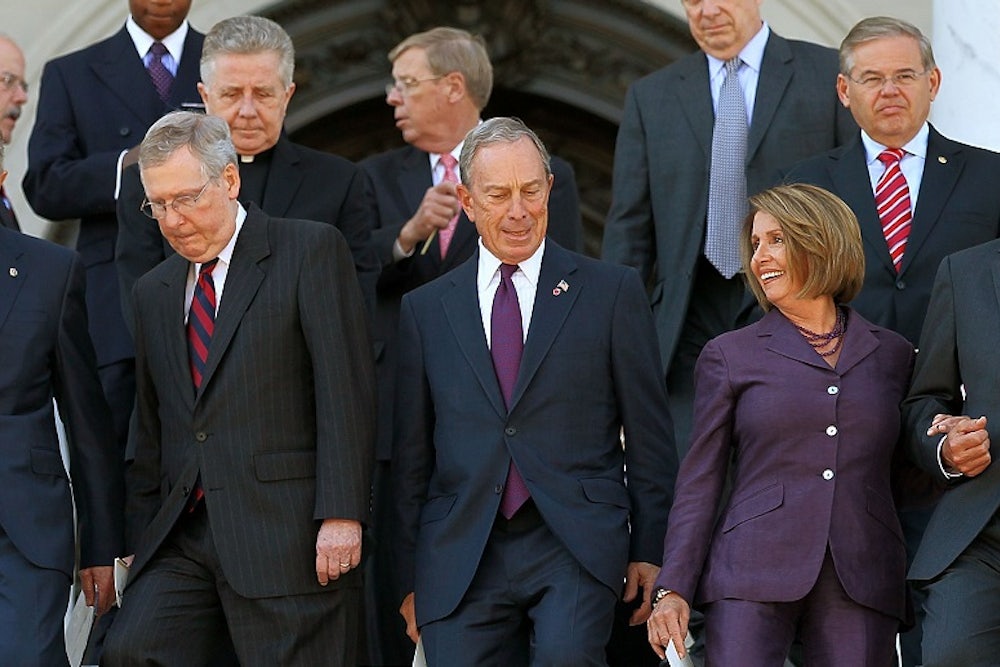You’ve probably heard these statistics before: Men make up 80 percent of the Senate and 81 percent of the House. There are just two black and four Hispanic senators. The numbers aren’t much better in the lower chamber. The fact that white men are vastly overrepresented in Congress is probably not news to anyone. But this discrepancy does not just exist at the federal level. It is prevalent across all levels of government.
That’s the main finding of new research by the Women Donors Network (WDN), which examined the gender and race of 42,000 officeholders from the federal level down to the county level. Overall, 71 percent of officeholders are male, despite the fact that men are a minority (49.2 percent) of the population. Just 10 percent of officeholders are people of color, despite representing more than 37 percent of the population. In fact, white men hold 65 percent of positions, more than twice their share of the population (31 percent). No matter what level of government you look at, the conclusion is the same: white men dominate elected office.

This problem has a tangible, negative impact on policymaking too. Countries with women leaders, for instance, are associated with higher economic growth. We don’t want to draw too broad a conclusion from this study. It doesn’t prove that having a woman leader causes stronger growth. But it does mirror private sector research that found that companies with women board members have better financial performance. The same underlying reason for this—more diversity of opinion leads to better decision-making—could be at work in countries with women leaders as well. In addition, other studies have found that women legislators are more likely to introduce legislation on civil rights and education issues. Researchers have also found a strong correlation between female legislators and progressive policies.
Those are all good reasons to support more women and people of color for elected office. But it is also fundamentally unfair that women and people of color make up such a small percentage of officeholders relative to their percentage of the population—and the majority of Americans agree with that statement as well. As part of this new report, WDN also released a survey of 800 Americans’ views of their elected officials. Forty-four percent described them as “an old boys’ club” while 25 percent said they represent the “one percent.” Just 11 percent said they represent the “face of America.”

In other words, Americans understand that the current makeup of elected officeholders is unacceptable. It’s just harder to do something about it. WDN finds broad support from both Democrats and Republicans for policies that would increase the number of women and people of color in office. But they don’t explain what those policies would look like. Support for different policies would undoubtedly fluctuate depending on what the policies actually are.
In the meantime, groups like EMILY’s List and the National Organization for Women are doing the hard work of organizing and recruiting women to run for elected office. These groups have had some success: the 113th Congress has the most female members of any in American history. That’s certainly a great achievement. But as WDN’s new report shows, there is a long way to go.
Correction: A previous version of this article stated that forty-one percent of respondents described elected officials as “an old boys’ club.” Forty-four percent did.
